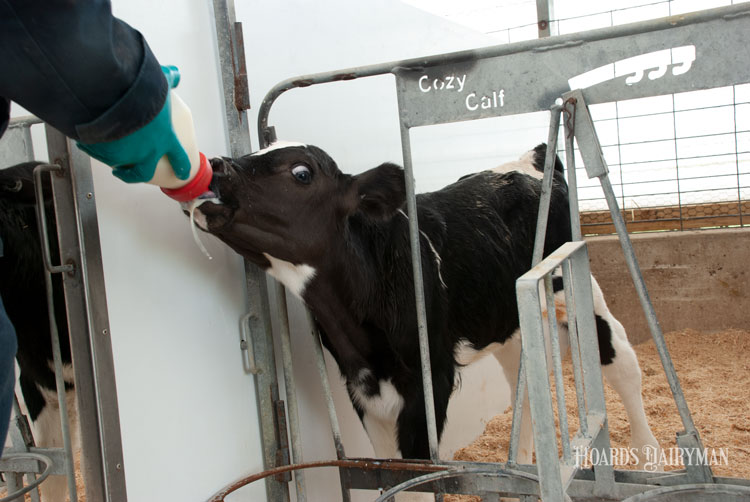
On many farms, it’s well understood that the calf’s first meal is of vital importance. For the most part though, the reason it’s so highly valued is the immunoglobulins (Ig) transmitted through that first feeding and its exceptional energy level.
According to Cornell’s Mike VanAmburgh, colostrum is so much more than its Igs or even its energy level.
“We think about Igs. This calf needs Igs. I am of the opinion now that Igs are somewhat irrelevant,” he hypothesized at the recent Four State Dairy Nutrition and Management Conferece. “The one thing calves can do is build Igs. They can’t build all this other stuff. They have to get it from mom.”
Research is now showing that colostrum is packed full of signalers that are working to position the calf for success in both immunity and growth.
To that end, VanAmburgh named just a few of the steroids cows pass on to their offspring through colostrum including insulin, prolactin, IGF-1, and leptin.
In fact, research in pigs is showing that relaxin absorbed from colostrum stimulates the development and differentiation of the uterus in the female piglet.
“Colostrum borne growth factors such as IGF-1 or hormones like insulin might act through specific receptors in the gut mucosa of the neonate to stimulate cell proliferation, cell differentiation, and protein synthesis,” VanAmburgh explained. “So it helps the gut grow. The gut is the largest immune system in the body, it’s a barrier for everything the animal swallows.”
He shared that these colostrum factors tell the gut to grow, be more robust, have greater surface area, and altogether become a stronger defense system.
While there is a lot more to learn when it comes to colostrum and its signaling, the importance of those first few power-packed meals to the calf’s life. “Colostrum’s really a communication tool to direct development at the beginning of extro-uterine life. It’s not just for the Igs, it’s doing lots of things to help the calf,” VanAmburgh concluded.








